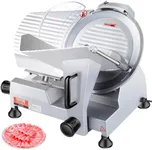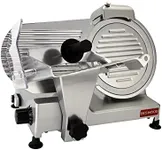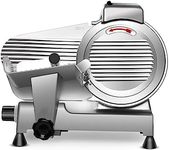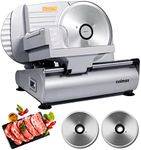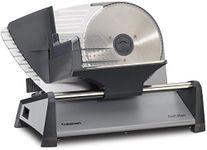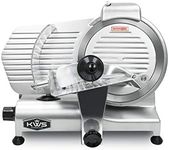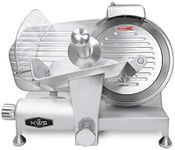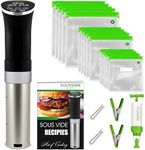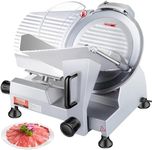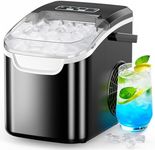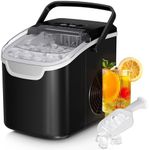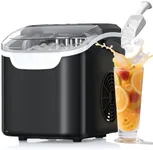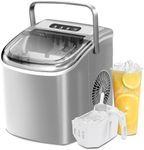Buying Guide for the Best Meat Slicers
Choosing the right meat slicer can make food preparation much easier, whether you're slicing deli meats, cheeses, or even vegetables. The best slicer for you depends on how often you plan to use it, what types of food you'll be slicing, and how much space you have in your kitchen. Understanding the main features and specifications will help you find a slicer that matches your needs and keeps your food prep safe and efficient.Blade SizeBlade size refers to the diameter of the circular blade used for slicing. This is important because a larger blade can handle bigger cuts of meat and slice more efficiently, while a smaller blade is easier to store and clean. Blades typically range from about 7 to 14 inches. Smaller blades (7-9 inches) are suitable for light home use and smaller items, while medium blades (10-12 inches) are more versatile for home cooks who want to slice a variety of foods. Larger blades (13-14 inches) are best for heavy-duty or commercial use. Choose a blade size based on the types and sizes of food you plan to slice most often.
Motor PowerMotor power is measured in watts and determines how easily the slicer can cut through different types of food. A more powerful motor can handle tougher meats and continuous use without overheating, while a less powerful motor is fine for occasional slicing of softer foods. Light-duty slicers usually have motors under 200 watts, which are good for infrequent use. Medium-duty slicers range from 200 to 300 watts and can handle more regular use. Heavy-duty slicers, with motors above 300 watts, are designed for frequent or commercial use. Consider how often and what types of food you'll be slicing to decide how much power you need.
Adjustable ThicknessAdjustable thickness allows you to control how thick or thin each slice will be. This is important for versatility, as different recipes and preferences require different slice thicknesses. Most slicers offer a range from paper-thin to about 1 inch thick. If you want to slice a variety of foods for different purposes, look for a slicer with a wide and easy-to-adjust thickness range. If you only need one type of slice, a simpler adjustment may be sufficient.
Safety FeaturesSafety features include things like blade guards, non-slip feet, and safety locks. These are crucial because meat slicers have very sharp blades and can be dangerous if not handled properly. Blade guards help protect your hands, non-slip feet keep the slicer stable during use, and safety locks prevent accidental operation. If you have children at home or are new to using slicers, prioritize models with strong safety features to reduce the risk of accidents.
Ease of CleaningEase of cleaning refers to how simple it is to take apart and wash the slicer. Since meat slicers come into contact with raw food, it's important to clean them thoroughly to prevent bacteria buildup. Some slicers have removable blades and parts that are dishwasher safe, while others require more manual cleaning. If you plan to use your slicer often, look for one that is easy to disassemble and clean, as this will save you time and help maintain hygiene.
Build MaterialBuild material affects the durability and longevity of the slicer. Common materials include plastic, stainless steel, and aluminum. Plastic models are lighter and often less expensive, but may not last as long. Stainless steel and aluminum are more durable and better suited for frequent use. If you want a slicer that will last for years and handle regular use, choose one made from sturdy materials like stainless steel or aluminum.
